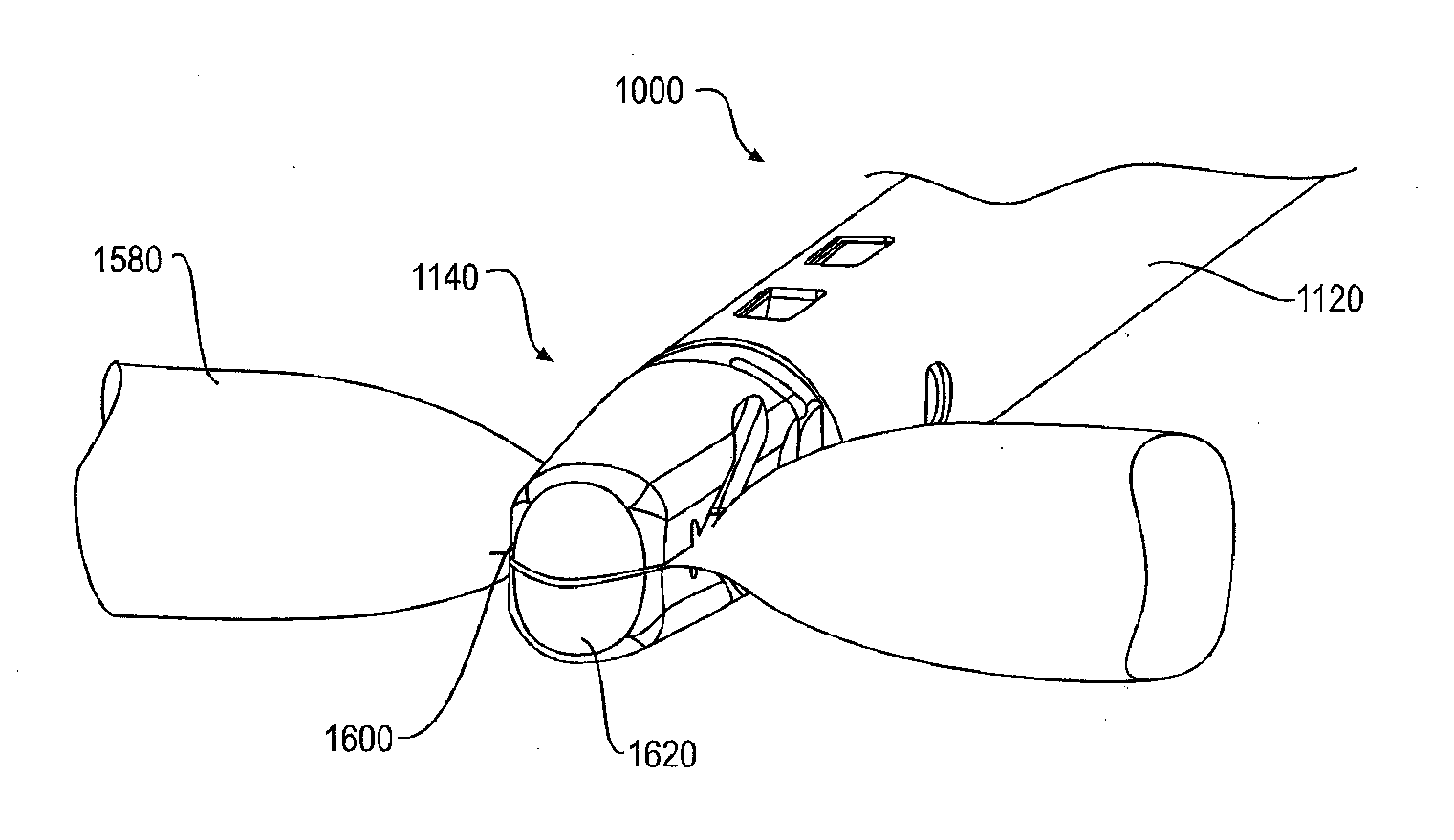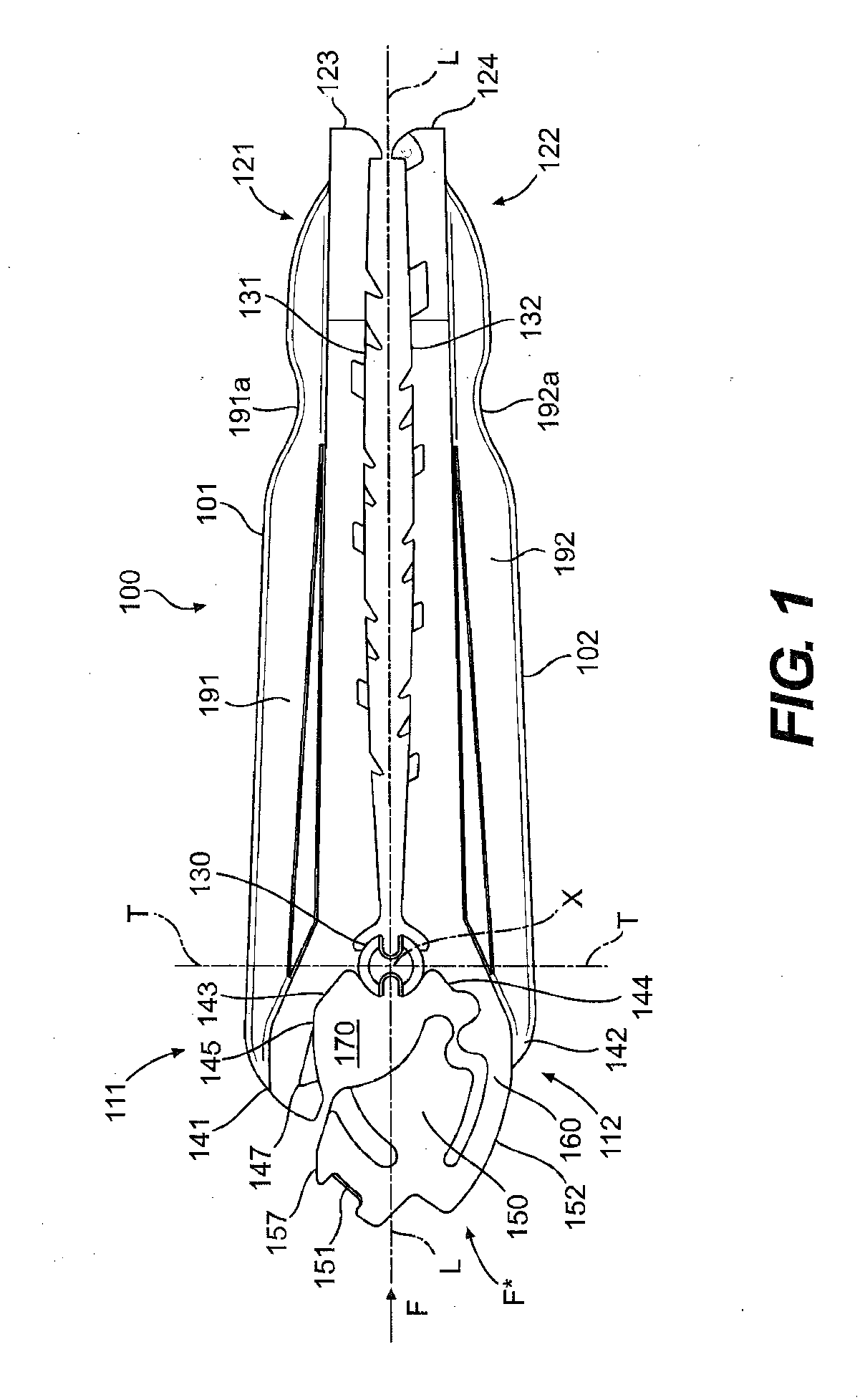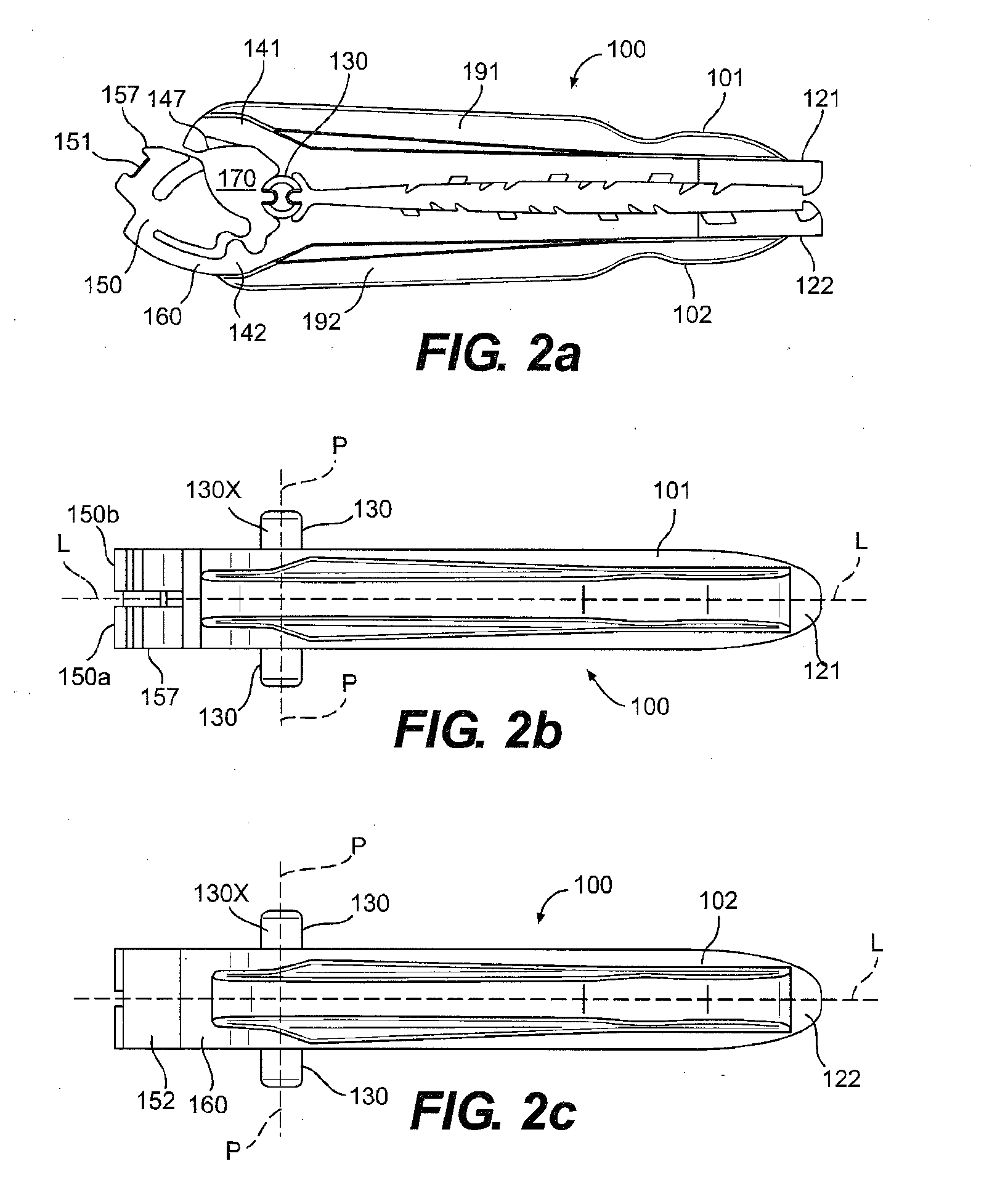Manual surgical ligation clip applier
- Summary
- Abstract
- Description
- Claims
- Application Information
AI Technical Summary
Benefits of technology
Problems solved by technology
Method used
Image
Examples
first embodiment
[0148]FIG. 1 shows a view of a surgical ligation clip 100 in accordance with present invention. The clip 100 defines a longitudinal axis “L” along its longest dimension and includes a first leg 101 and a second leg 102 each extending along the longitudinal axis L and having proximal 111, 112 and distal 121, 122 end portions with respect to said longitudinal axis. As used herein, the term “proximal” shall refer to the portion of the clip referenced herein which is away from the tips of the clip which open, and “distal” shall refer to the portion of the clip at the tips which open, in accordance with the convention that the clip is inserted distal tip first through an instrument towards an anatomical body to be ligated, such that distal generally refers to the direction away from the user or applier of the surgical clip and proximal refers to the direction opposite to distal.
[0149]In clip 100, a clip hinge 130 joins the first and second legs 101, 102 at a point on their respective pro...
second embodiment
[0192]In the invention the wedges and catches are separate pieces attached to a catch tube, see FIGS. 60-63, and have the same forward actuation sequence as the 1st embodiment to lock the clip but does not require a dwell on the punch when the punch returns to the start position. In this embodiment the wedge and catch assembly stop just short of the clip stopping on the inner end surface of the jaws. The punch is then pushed forward to engage with the locking feature of the clip. The clip is first pushed out of the catch and wedges until the legs of the clip stop on the inner end surface of the jaws. The punch continues forward forcing the locking mechanism on the clip to rotate into the clip's locked position. During the rotation of the locking mechanism of the clip the legs are clamped together with the locking mechanism instead of the wedges as previously described. This embodiment also has internal leaf springs attached to the inner tube that bias the ends of the wedges together...
PUM
 Login to View More
Login to View More Abstract
Description
Claims
Application Information
 Login to View More
Login to View More - Generate Ideas
- Intellectual Property
- Life Sciences
- Materials
- Tech Scout
- Unparalleled Data Quality
- Higher Quality Content
- 60% Fewer Hallucinations
Browse by: Latest US Patents, China's latest patents, Technical Efficacy Thesaurus, Application Domain, Technology Topic, Popular Technical Reports.
© 2025 PatSnap. All rights reserved.Legal|Privacy policy|Modern Slavery Act Transparency Statement|Sitemap|About US| Contact US: help@patsnap.com



